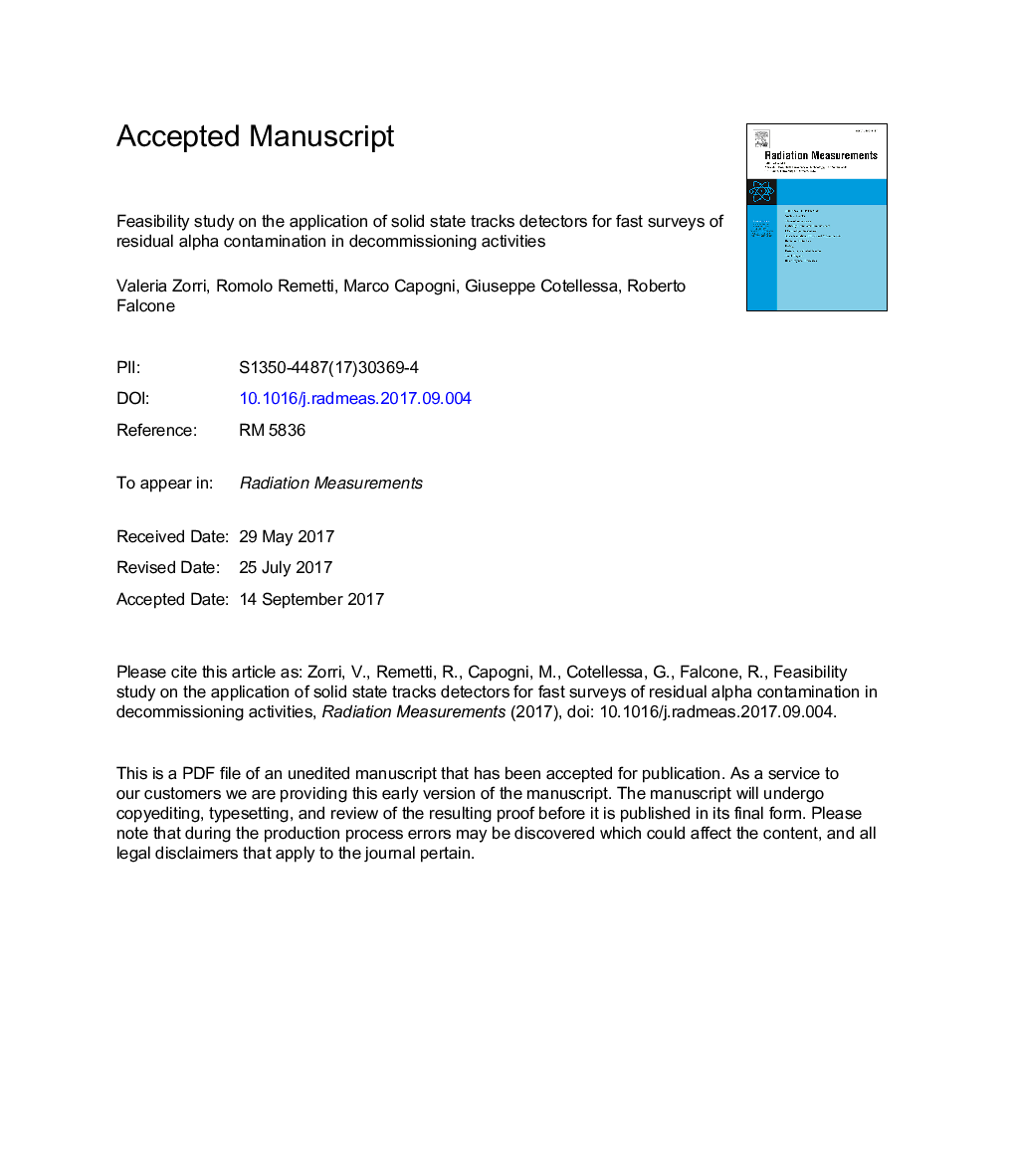| Article ID | Journal | Published Year | Pages | File Type |
|---|---|---|---|---|
| 8250042 | Radiation Measurements | 2017 | 12 Pages |
Abstract
A feasibility study concerning the application of Poly-Allyl-Diglycol Carbonate (CR-39â¢) solid state tracks detectors for fast survey of residual alpha contamination has been carried out at Casaccia Research Center, as a joint effort from ENEA, Sogin, and Sapienza University of Rome. The main target of the activity is to develop and set up a fast and economic method for assessing the presence of residual uranium, plutonium, and/or mixed oxides (MOX) traces on walls, floor, furniture, and small objects (PC-displays, keyboards, tools, etc.) of hot laboratories under decommissioning. The key idea is using CR-39⢠foils for cladding surfaces under investigation for recognizing the typical uranium and plutonium clusters originated by alpha particles interaction with CR-39â¢, that are clearly distinguished from the tracks originated by radon decay products. Results of experimental tests have given a clear picture of alpha tracks clusters originated by plutonium sources, while radon decay products gave uniform alpha tracks' distribution.
Keywords
Related Topics
Physical Sciences and Engineering
Physics and Astronomy
Radiation
Authors
Valeria Zorri, Romolo Remetti, Marco Capogni, Giuseppe Cotellessa, Roberto Falcone,
